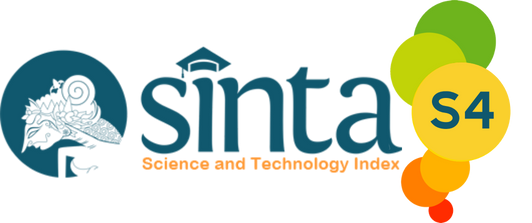KEMAMPUAN PEMAHAMAN FUNGSI DOUSHI TE IMASU MAHASISWA TINGKAT III TAHUN MASUK 2016 PROGRAM STUDI PENDIDIKAN BAHASA JEPANG UNIVERSITAS NEGERI PADANG
DOI:
https://doi.org/10.24036/omg.v1i3.96Abstract
This research is motivated by the difficulty of students in the difficulty of the form of change in behavior and the functions contained in the te imasu verb. This study aims to study the understanding of the function of doushi te Imasu III level students in 2016, the Japanese language education program in Padang State University in full in accordance with the composition included in it. This research was conducted in the Japanese language study program at Padang State University in November 2018.
This research method is a quantitative method and this type of research is descriptive. The population and sample in this study were the third year students entering the 2016 Japanese language study program in Padang State University as many as 29 students.
Based on the results of data analysis that has been completed on, it can be summarized as follows. First, the ability and ability of level III students to enter 2016 with an average score of 77.9. Second, from the three indicators that have been tested, it is undeniable that the strongest ability of student doushi te imasu is in accordance with the function of shinkouchuu with an average value of 84.13. While the ability of student doushi te imasu is protected from shuukan function with an average score of 72.75. Third, the strongest Shinkouchuu function on the second indicator with an average value of 93.96. Fourth, the strongest function is on the third indicator with an average value of 78.44. Fifth, the function of kekkazanzon is strongest in the third indicator. Third, the ability of doushi and imasu of students is categorized as good. Even so, a small mistake made by most students is smaller than the intransitive and transitive relationship from the context of the question. In addition, students are still less thorough and less careful in answering questions and can question the questions in accordance with the intent and answers.
Keywords: Ability, understanding, doushi, te imasu.References
Atmazaki. 2006. Kiat-kiat Mengarang dan Menyunting. Padang: Citra Budaya
Gustia, dkk. 2010. Fungsi Kata Kerja Bentuk Te iru dalam Buku Minna no Nihongo I dan Minna no Nihongo II Ditinjau dari Aspek. Jurnal. Universitas Riau.
Kridalaksana, Harimurti. 2008. Kamus Linguistik. Jakarta: Gramedia Pustaka Utama.
Putri, Elisa Abdul. 2015. Aspek Verba Te Iru dalam Cerpen Toshinshun. Jurnal. Universitas Andalas
Sudjianto dan Ahmad Dahidi. 2009. Pengantar Linguistik Bahasa Jepang. Jakarta: Kesaint Blanc








